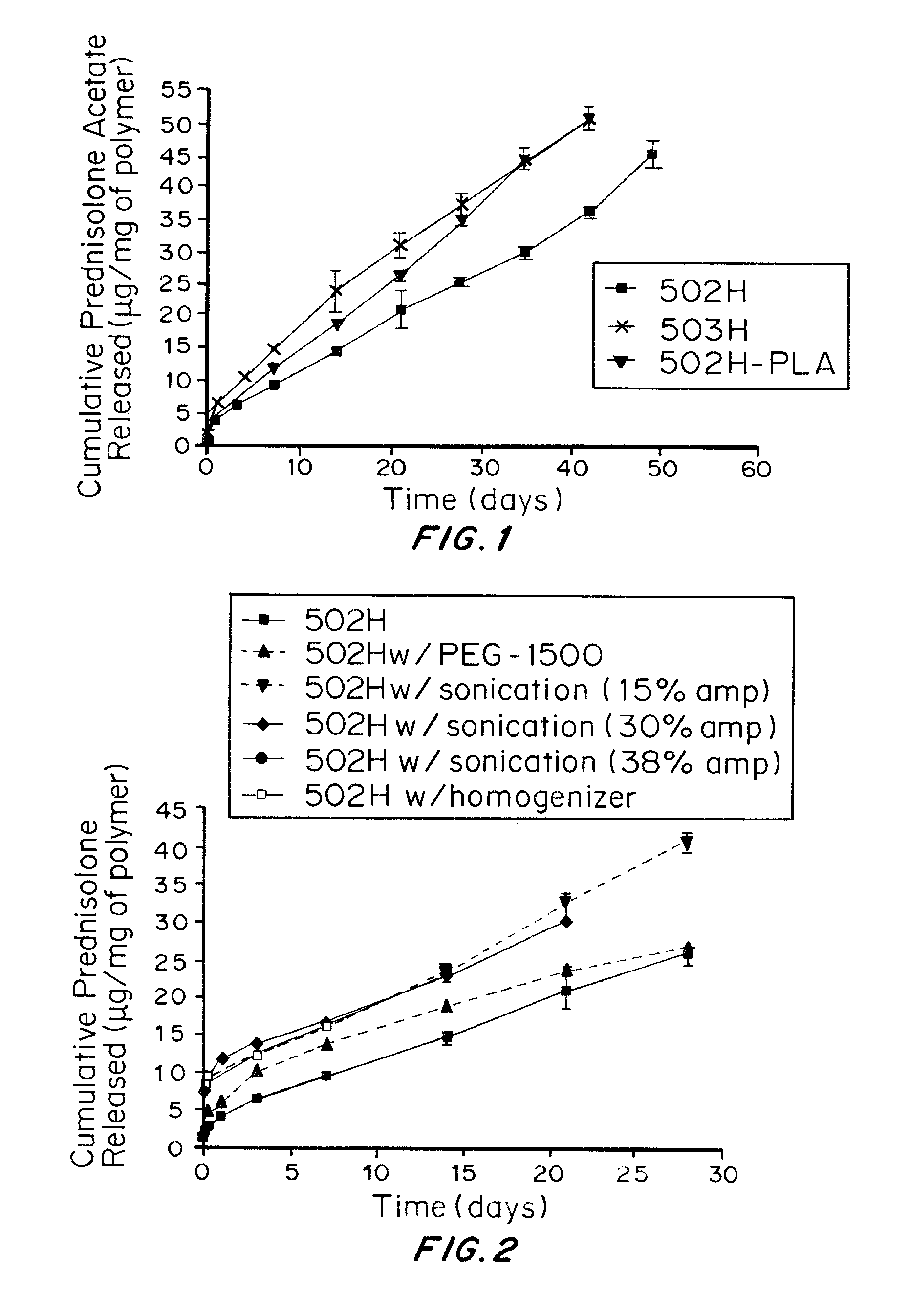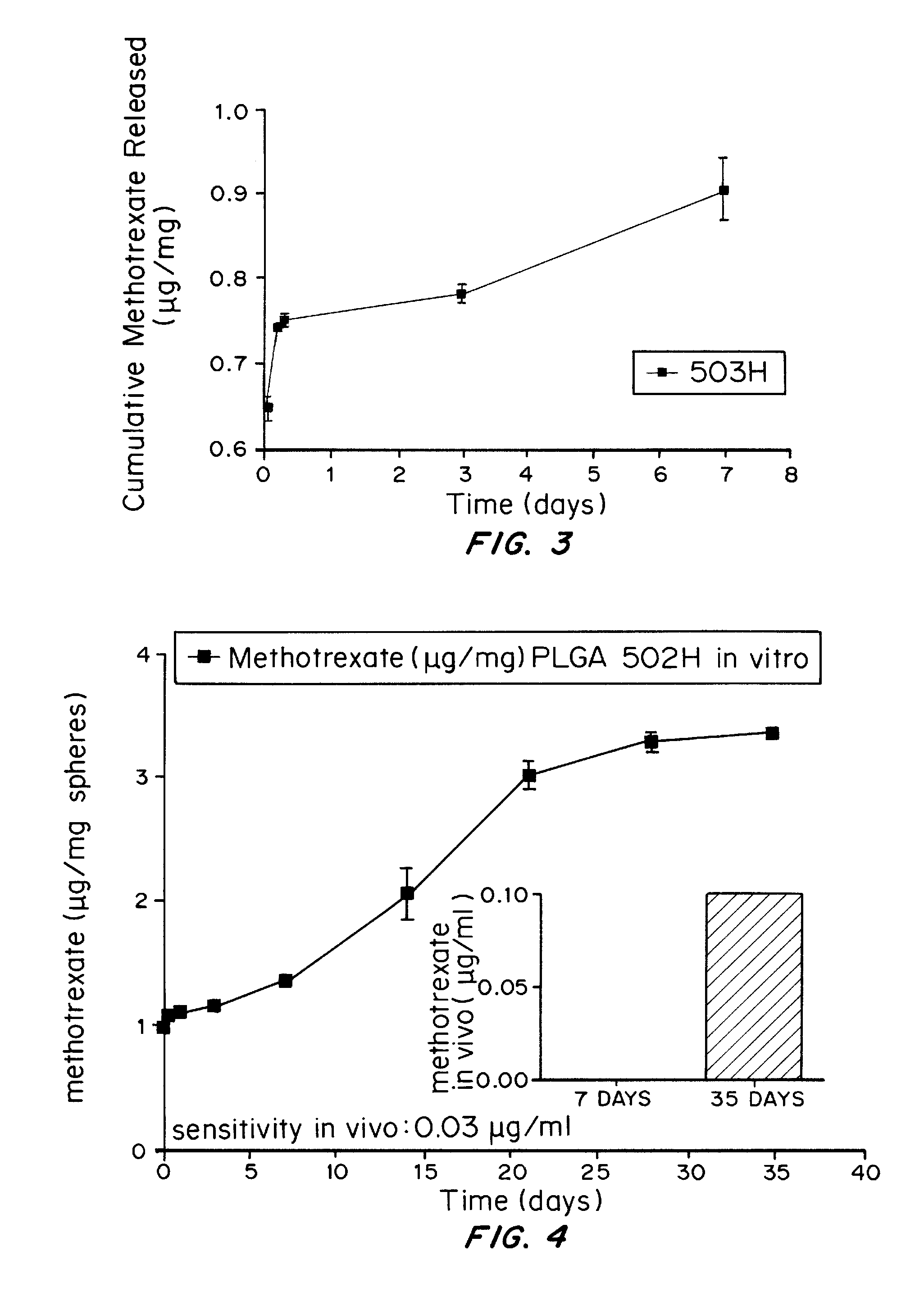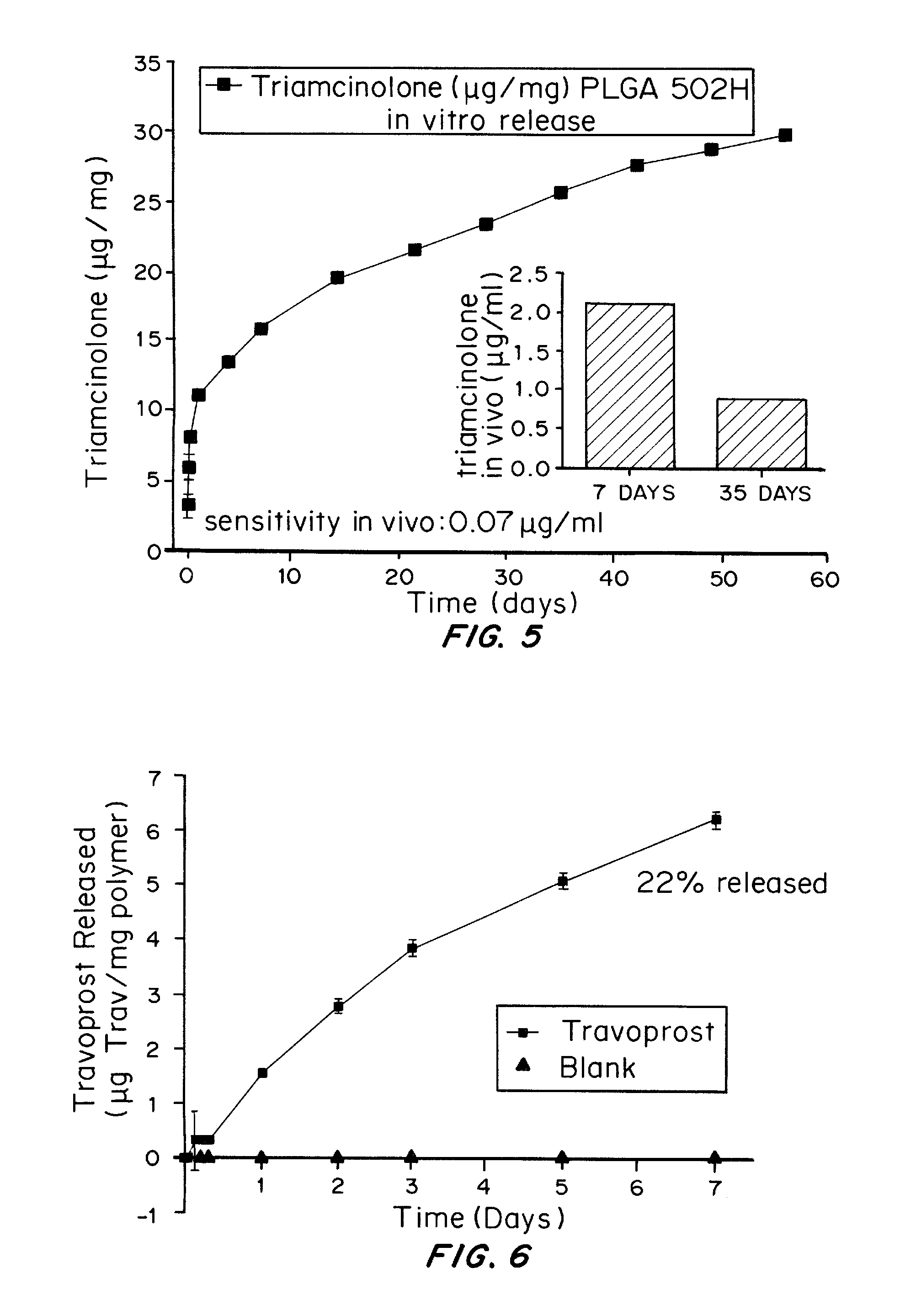Sustained delivery of drugs from biodegradable polymeric microparticles
- Summary
- Abstract
- Description
- Claims
- Application Information
AI Technical Summary
Benefits of technology
Problems solved by technology
Method used
Image
Examples
example 1
Preparation of Microspheres
[0159]The microspheres were prepared by phase separation using a single emulsion solvent evaporation method. Two hundred milligrams of the specific polymer was dissolved in 1 mL of dichloromethane (DCM) and 4 mL of trifluoroethanol (TFE). 40 mg of prednisolone acetate or 20 mg of methotrexate was added to the polymer solution and vortexed to obtain the desired drug to polymer ratio: 20% (40 mg drug / 200 mg polymer) for prednisolone acetate and 10% (20 mg drug / 200 mg polymer) for methotrexate. The organic phase was added dropwise to 200 mL of 5% (w / v) PVA aqueous solution. The aqueous and organic phases were emulsified via stirring / hardening for three hours. Microspheres were collected by centrifugation, washed three times with deionized water, and freeze dried for three days. Blank microspheres were made at the same time under identical conditions except no drug was added.
Particle Sizing and Scanning Electron Microscopy
[0160]The volume-weighted mean diamete...
example 2
In Vitro Release Studies of Prednisolone Acetate-Loaded Microspheres
[0161]In 1.5 mL eppendorf tubes, 10 mg prednisolone acetate-loaded microspheres or blank microspheres were suspended in 1 mL of phosphate buffered saline (PBS). Samples were prepared in triplicate. The mixtures were incubated at 37° C. on a labquake rotating shaker. At specific time points, 1, 3, 5, and 8 hours and 1, 3, and 7 days, and once every 7 days thereafter until no pellets were present, the mixture was centrifuged and the supernatant and the supernatant was collected. One milliliter of phosphate buffered saline was then added to replace the withdrawn supernatant and the microspheres were resuspended and returned to the shaker. Supernatants for each of the sets of microspheres was frozen and stored at −80° C. for subsequent analysis using UV spectroscopy at 245 nm and 303 nm for prednisolone acetate and methotrexate respectively. The concentration of dissolved prednisolone acetate or methotrexate was determi...
example 3
In Vitro and In Vivo Release Studies of Methotrexate-Loaded Microspheres
[0170]10% methotrexate-loaded microspheres were prepared as described in Example 1. The in vitro release study was conducted as described in Example 2. The results are shown in FIG. 3. FIG. 3 shows that the microspheres were still releasing methotrexate after 7 days from PLGA 503H microspheres.
[0171]FIG. 4 shows the in vivo release profile of methotrexate from PLGA 502H microspheres. The graph shows that an effective amount of methotrexate was released in vivo over at least 35 days.
PUM
| Property | Measurement | Unit |
|---|---|---|
| Time | aaaaa | aaaaa |
| Time | aaaaa | aaaaa |
| Time | aaaaa | aaaaa |
Abstract
Description
Claims
Application Information
 Login to View More
Login to View More - R&D
- Intellectual Property
- Life Sciences
- Materials
- Tech Scout
- Unparalleled Data Quality
- Higher Quality Content
- 60% Fewer Hallucinations
Browse by: Latest US Patents, China's latest patents, Technical Efficacy Thesaurus, Application Domain, Technology Topic, Popular Technical Reports.
© 2025 PatSnap. All rights reserved.Legal|Privacy policy|Modern Slavery Act Transparency Statement|Sitemap|About US| Contact US: help@patsnap.com



